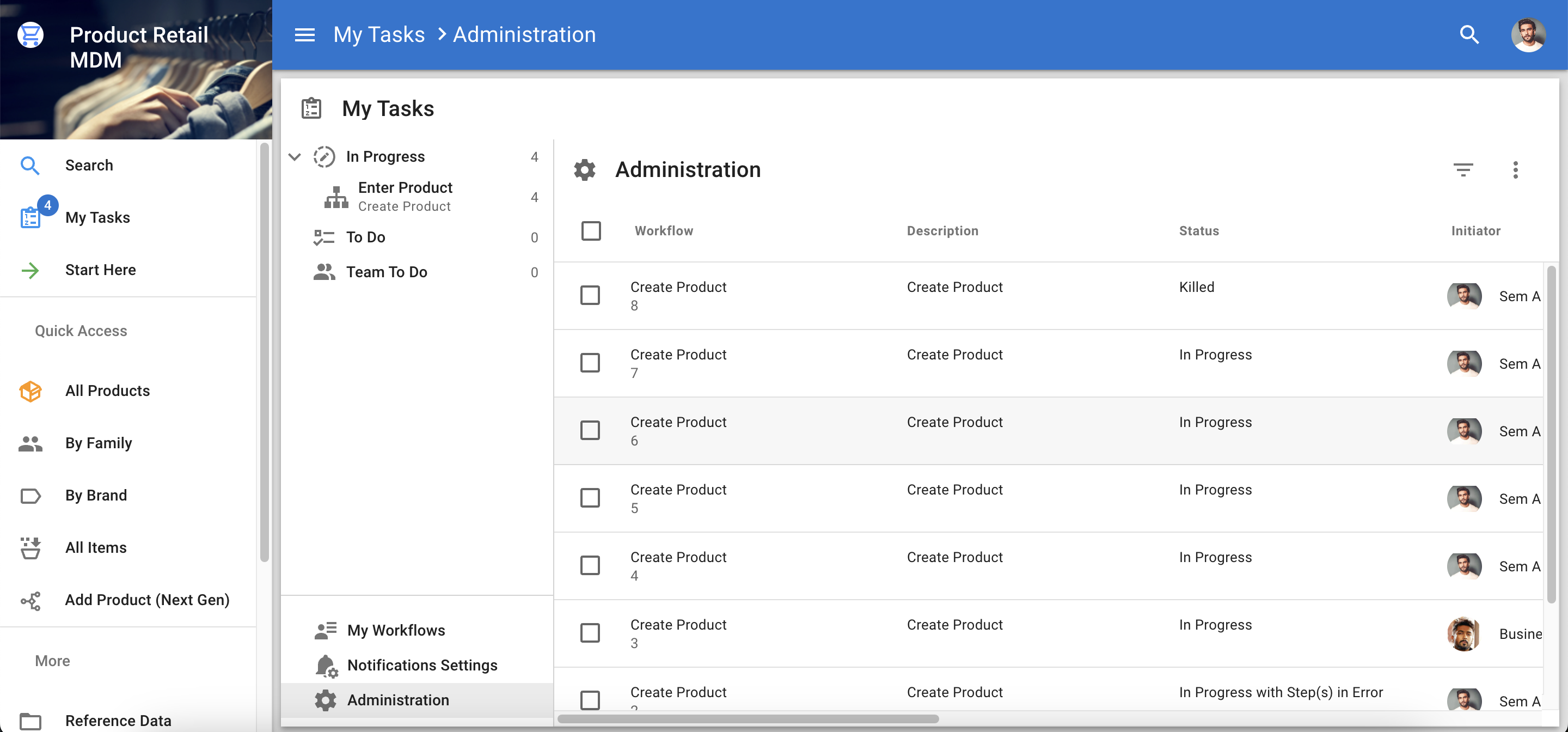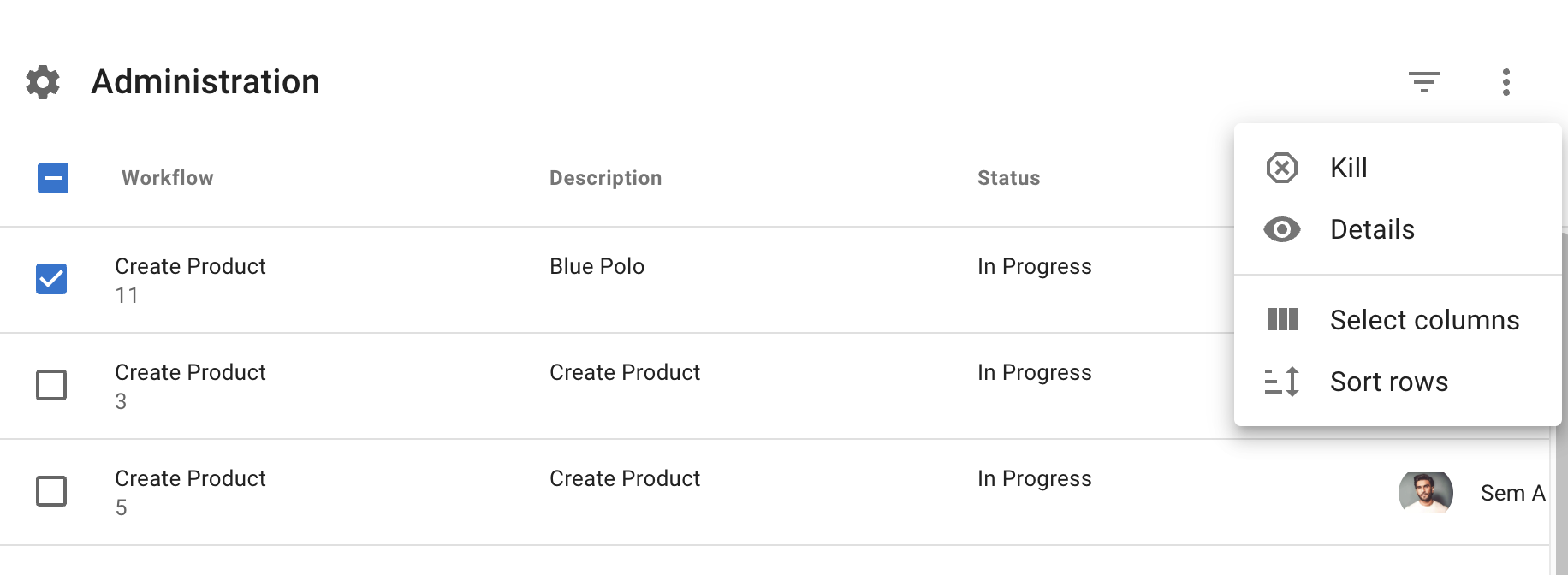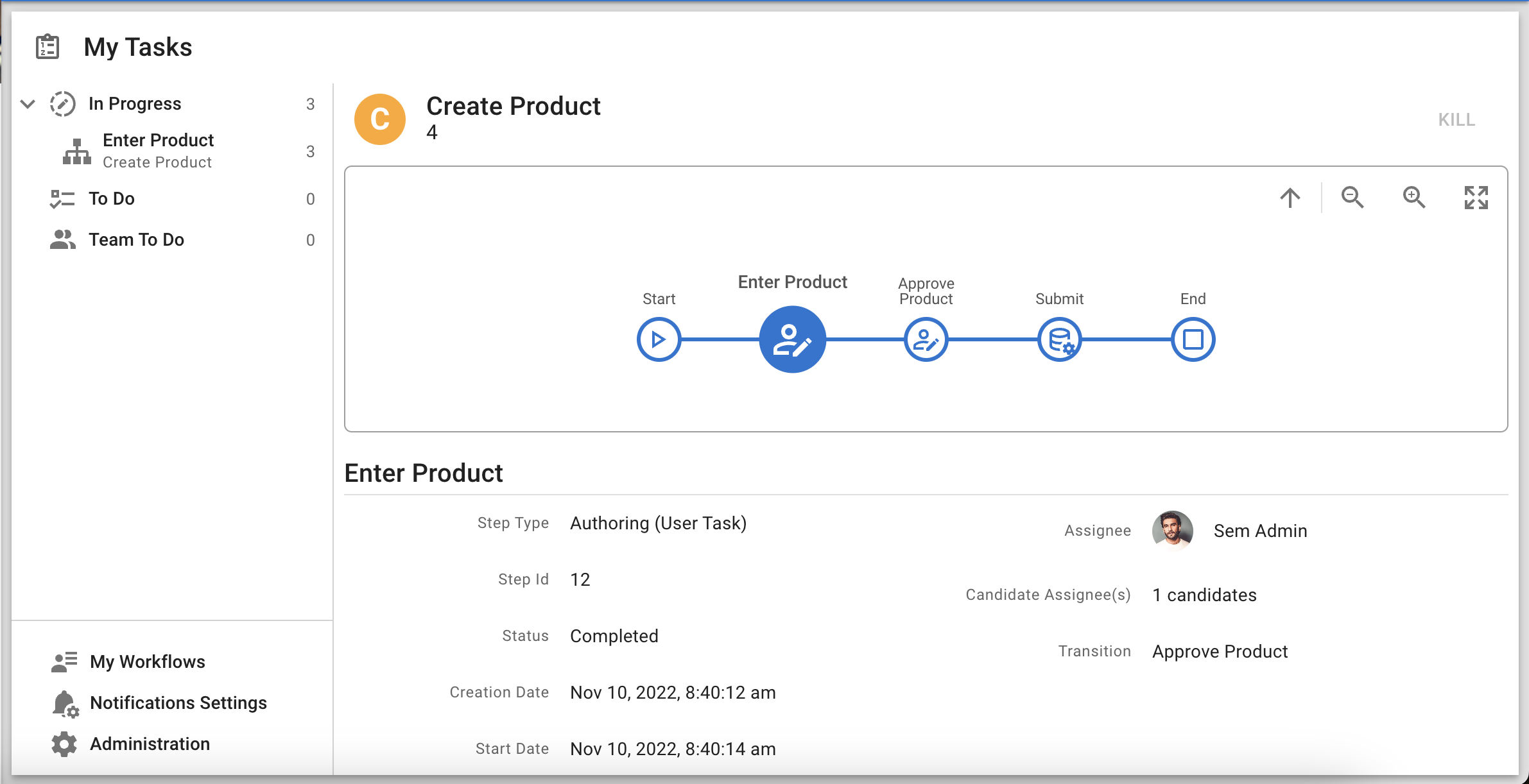| This is documentation for Semarchy xDM 2023.2, which is no longer supported. For more information, see our Global Support and Maintenance Policy. |
Workflow administration
This page describes how to administer workflows.
|
Data-driven workflows, available in Semarchy xDM 2023.1 and later, are subject to specific licensing requirements; please confirm your eligibility to use such new functionality by consulting your license agreement or by contacting your Semarchy account representative prior to use. All customers can still use the workflow feature available in previous versions (now known as legacy workflows). For more information, see Workflows (legacy). |
Authentication and privileges
Applications or users administrating workflows in {mdm-regular-product-name} using the API and the user interface must be authenticated and meet one of the following criteria:
-
Have one role with Grant full access to the model selected in the model privileges.
-
Have the Workflow Administrator role, as defined in the workflow definition.
-
Be either the initiator of the workflow instance, or a candidate or an assignee of any user task of the workflow instance (applies to workflow administration REST API, for read-only endpoints only—that is, list or get workflow instances, list or get user task instances).
Workflow administration UI
Access the workflow administration section
The workflow administration section is available from My Tasks, by clicking the Administration item at the bottom of the editor navigation panel.
This section presents the list of workflow instances. The list can be filtered based on the workflow instance ID and the workflow instance status.

You can also access the Administration section using the following URLs:
| View | URL |
|---|---|
Administration section with no filter |
|
Specific search results |
|
Specific workflow instance view |
|
Specific workflow instance editor with a step |
|
Workflow instance list
The workflow administration section displays the list of workflow instances in a tabular format with the following columns:
| Column | Description |
|---|---|
Workflow |
Workflow instance label and identifier. |
Description |
Description of the workflow instance. |
Status |
Status of the workflow instance. Possible values are:
|
Initiator |
Initiator of the workflow instance. |
Current Root Step |
Step in progress in the given workflow instance. |
Assigned To |
Assignee of the step in progress. If the current root step is part of a parallel block, then this column is empty. |
Start Date |
Start date of the workflow instance. |
End Date |
End date of the workflow instance. |
Due Date |
Due date to complete the workflow instance. |
Priority |
Priority assigned to the workflow instance. Possible values are:
|
Workflow ID |
Identifier of the workflow instance. |
Actions

From the Administration section’s ![]() Options menu, you can perform the following actions on the workflow instances:
Options menu, you can perform the following actions on the workflow instances:
-
Kill a workflow instance: select the workflow that you want to cancel and select Kill. The step at which the workflow instance was cancelled is represented with the
Killed icon.
-
Examine workflow instance details: click any workflow in the list to open its details, or select a workflow and click Details in the action menu. This opens the workflow details view.
-
Customize the column arrangement: click Select columns, then select or deselect items and drag them up or down to rearrange the columns in the table based on what matters most to you.
-
Sort rows in the table view: click Sort rows and select the columns used to sort, as well as their sort order.
Workflow details view
The workflow details view features a workflow history diagram and a step details section.

Workflow history
This graphical view displays the completed and ongoing step(s) of the workflow instance as a diagram. Click a step to view its details. The selected step appears with a scaled-up icon.
In the diagram, you can perform the following actions:
-
Back to workflow instance: unselect a selected step and return to the workflow instance.
-
Zoom out: zoom out of the diagram.
-
Zoom in: zoom in on the diagram.
-
Fit to page: fit the diagram into the page.
Step details
This section displays the details of the selected workflow step. When no step is selected, it is empty.
The following details are displayed for all steps:
| Property | Description |
|---|---|
Step Type |
Type of step as defined in the workflow. |
Step ID |
Identifier of the step in the workflow. |
Status |
Status of the step. Possible values are Initializing, Completed, In Progress, Killed, or In Error. |
Error |
(Only available if the status of the step is In Error.) |
Start Date |
Date and time when the user started working on the step. |
End Date |
Date and time when the step was completed. |
The following details are displayed for start events:
| Property | Description |
|---|---|
Initiator |
Name of the user who initiated the workflow. |
Description |
Description added by the initiator when starting the workflow. |
The following details are displayed for user tasks:
| Property | Description |
|---|---|
Creation Date |
Date and time when the step was created. |
Assignee |
Name of the user to whom the step is currently assigned. |
Candidate Assignee(s) |
Name of the users who can claim this user task. |
Transition |
(Empty if the user task is in progress.) |
The following detail is displayed for routes:
| Property | Description |
|---|---|
Selected Route |
Name of the route into which the workflow progressed. |
The following details are displayed for parallel blocks:
| Property | Description |
|---|---|
Parallel Block |
Name of the parallel block. |
Branches |
Names of the branches in the parallel block. |
Depending on the selected step, the following actions may be available:
| Action | Description |
|---|---|
|
This action is available for a step in error within a workflow that has not been killed. The administrator can restart the workflow from the failed step. |
|
This action is available for unassigned user tasks. The administrator can refresh the list of potential candidates following updates to assignment criteria or changes in user roles or eligibility since the task’s creation. |
|
This action is available for assigned user tasks. The administrator can release a task to assign it to another user. |
|
This action is available for a user task that has been released (i.e., no longer assigned to a user). The administrator can assign the task to another candidate. |
Workflow administration REST API
The following API endpoints are available to administer workflows:
-
Workflow Instances:
-
List and get workflow instances.
-
Kill a workflow instance.
-
Retry a specific failed step of a workflow instance.
-
-
User Task Instances:
-
List and get user task instances.
-
Assign a user task.
-
Release a user task.
-
Refresh the list of candidates for a given user task.
-
| For a complete description of each API endpoint, see the REST API documentation. |